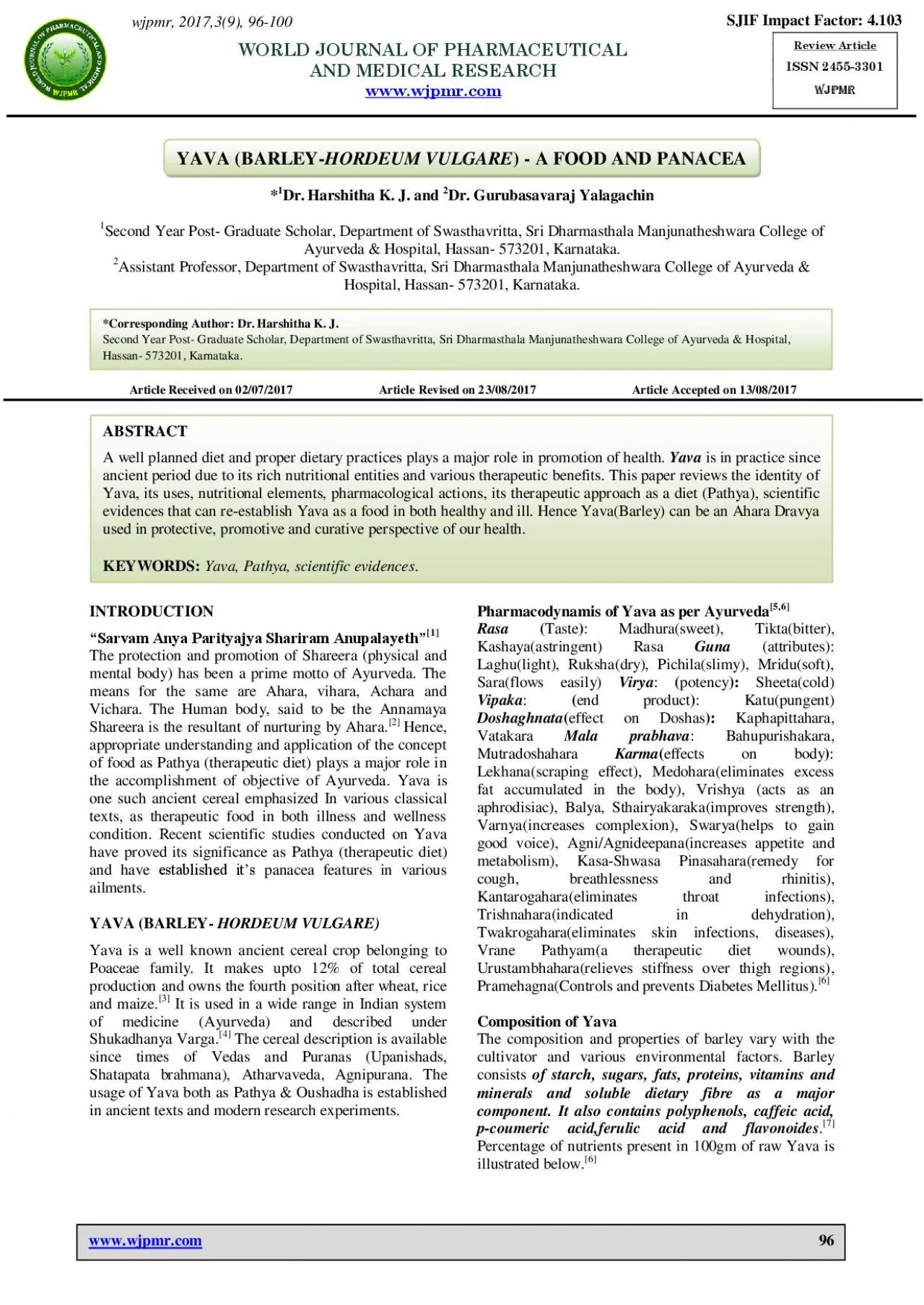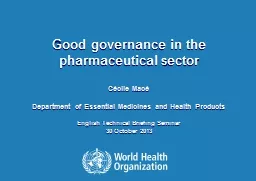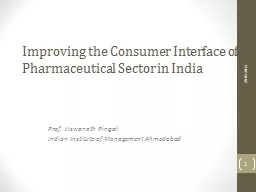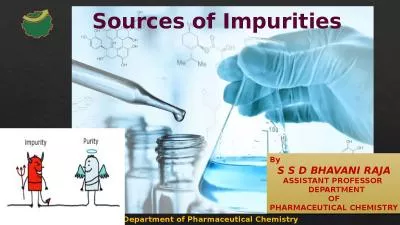PDF-World Journal of Pharmaceutical and Medical Research
Author : blindnessinfluenced | Published Date : 2020-11-19
Harshitha et al wwwwjpmrcom 96 YAVA BARLEY HORDEUM VULGARE A FOOD AND PANACEA 1 Dr Harshitha K J and 2 Dr Gurubasavaraj Yalagachin 1 S econd Year Post Graduate
Presentation Embed Code
Download Presentation
Download Presentation The PPT/PDF document "World Journal of Pharmaceutical and Medi..." is the property of its rightful owner. Permission is granted to download and print the materials on this website for personal, non-commercial use only, and to display it on your personal computer provided you do not modify the materials and that you retain all copyright notices contained in the materials. By downloading content from our website, you accept the terms of this agreement.
World Journal of Pharmaceutical and Medical Research: Transcript
Download Rules Of Document
"World Journal of Pharmaceutical and Medical Research"The content belongs to its owner. You may download and print it for personal use, without modification, and keep all copyright notices. By downloading, you agree to these terms.
Related Documents














